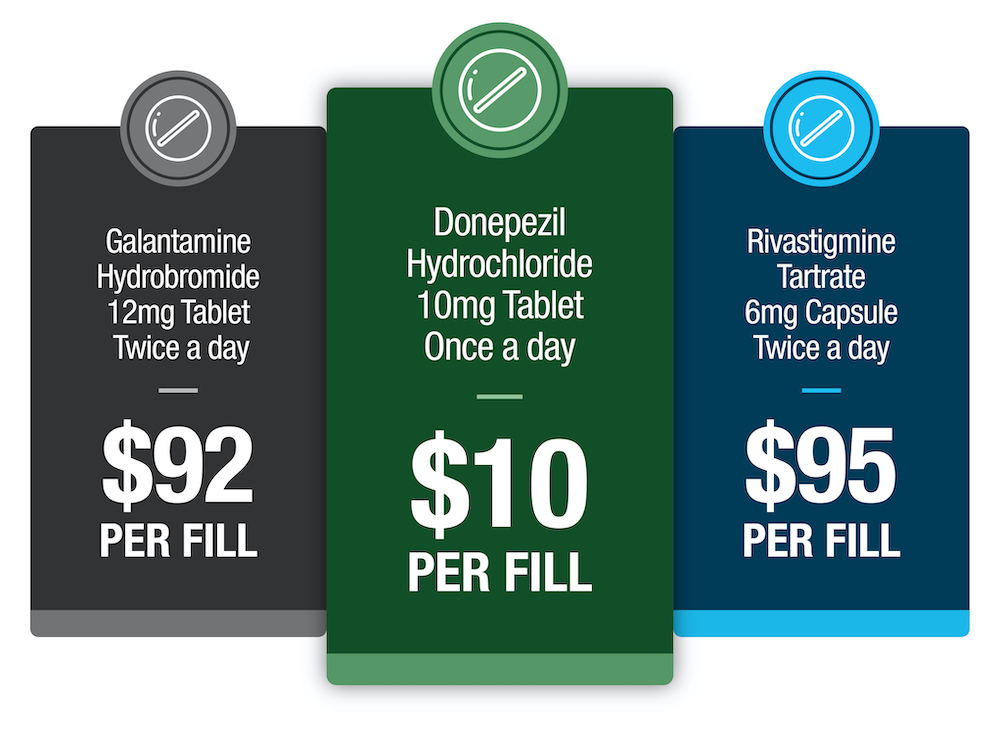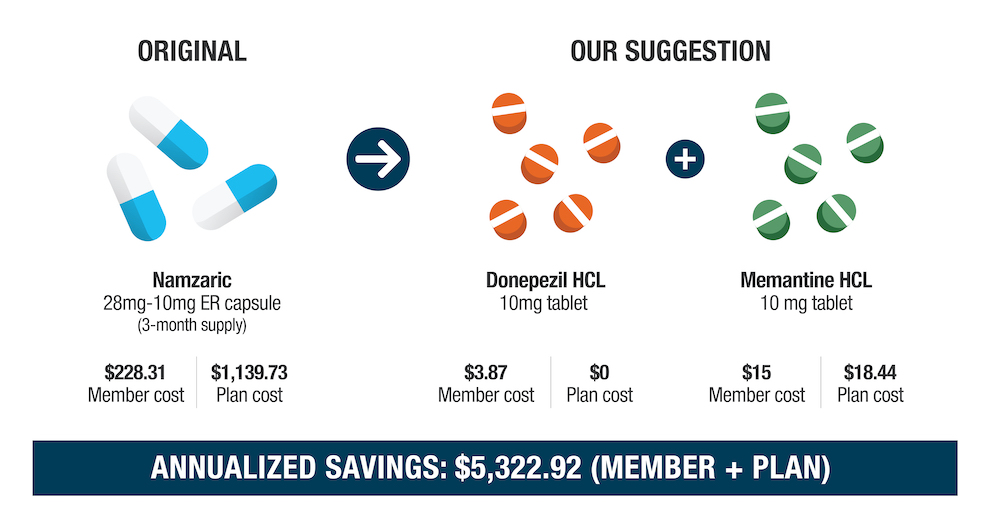A collection of clinical insights from our team of in-house pharmacists. These industry veterans curate, update and review our patented technology’s 30,000+ clinical, dose-adjusted savings suggestions—and they’ve got expertise to share.
Check back for more condition-focused content, featuring key trends we’re seeing in utilization, medical management, pricing, therapeutic alternatives and more.
———————————————–
As World Alzheimer’s Month comes to a close, we take a look at the most common cause of dementia and its evolving treatment options—including the controversial approval of Aduhelm™.
Condition Summary
Alzheimer’s disease is the most notorious form of dementia and commonly found in older populations. The most notable symptom is memory loss and can eventually lead to impairments such as decision making and simple motor function. Diagnosis of Alzheimer’s combines neuropsychological testing, as well as neuroimaging.
Treatment
- Currently there is no cure for Alzheimer’s—only therapies to delay progression and improve symptoms. There are only a few treatment options based on mild, moderate or advanced cases.
- There are two primary classes of oral therapy that have been in the market for several years and are well researched:
- Cholinesterase inhibitors: Utilized from mild up through advanced Alzheimer’s
- N-methyl-D-aspartate receptor antagonist: Utilized for moderate to advanced disease
- A new treatment called aducanumab has recently been approved by the FDA. Marketed as Aduhelm™, this monoclonal antibody treatment is infused intravenously and is indicated for mild dementia states. There is limited evidence to its efficacy, which has led to controversy over its approval.
Key Trends
- Compared to the $200 annual cost we see for current treatment options, the newest Alzheimer’s medication, Aduhelm, will have an estimated annual price tag of $56,000 per patient (not accounting for discounts and rebates).
- Additionally, there are more than 125 agents currently undergoing clinical trials related to the treatment of Alzheimer’s.
- An estimated 6.2 million Americans live with Alzheimer’s—a number that could triple by the year 2050.
Why It Matters
Aducanumab and other new medications on the horizon pose substantial cost increases for health plan sponsors—especially those offering Medicare plans. No matter the efficacy and success of these new treatments, the healthcare system should begin preparing for what is to come.
The clinical pharmacists who make up our Pharmacy and Therapeutics Committee review every new medication, evaluating them for safety, and therapeutic alternatives. With this clinical insight seamlessly integrated into our clients’ plan design, there can be confidence that members receive the most cost-effective medication.
Utilization Snapshot
- Nine out of 10 Rx Savings Solutions members on Alzheimer’s medications currently receive treatment for about $200 per year (total member/plan cost). However, there are clear cost differences between existing treatments.
- Within the three cholinesterase inhibitors available, there can be substantial discrepancies in cost. Clinical research points to all three agents having relatively equal efficacy. However, prescribers often don’t know the price or out-of-pocket cost an individual patient will pay.

Real Member Savings
As we all navigate new and upcoming Alzheimer’s treatment options, our solution continues to find opportunities for members and clients to reduce their costs on current medications. We recently identified that a member could save big by taking the individual ingredients of their current medication separately—what we call a “combination split.” Was it worth nearly $900 to take two tablets instead of one capsule? It was for this member and caregiver, and they helped their health plan significantly reduce healthcare costs while doing it.

———————————————–
Meet Our Pharmacists
How can RxSS find so many ways to save on prescriptions? First, we find smart pharmacists. Learn all about our Pharmacy and Therapeutics (P&T) Committee and what they do.

